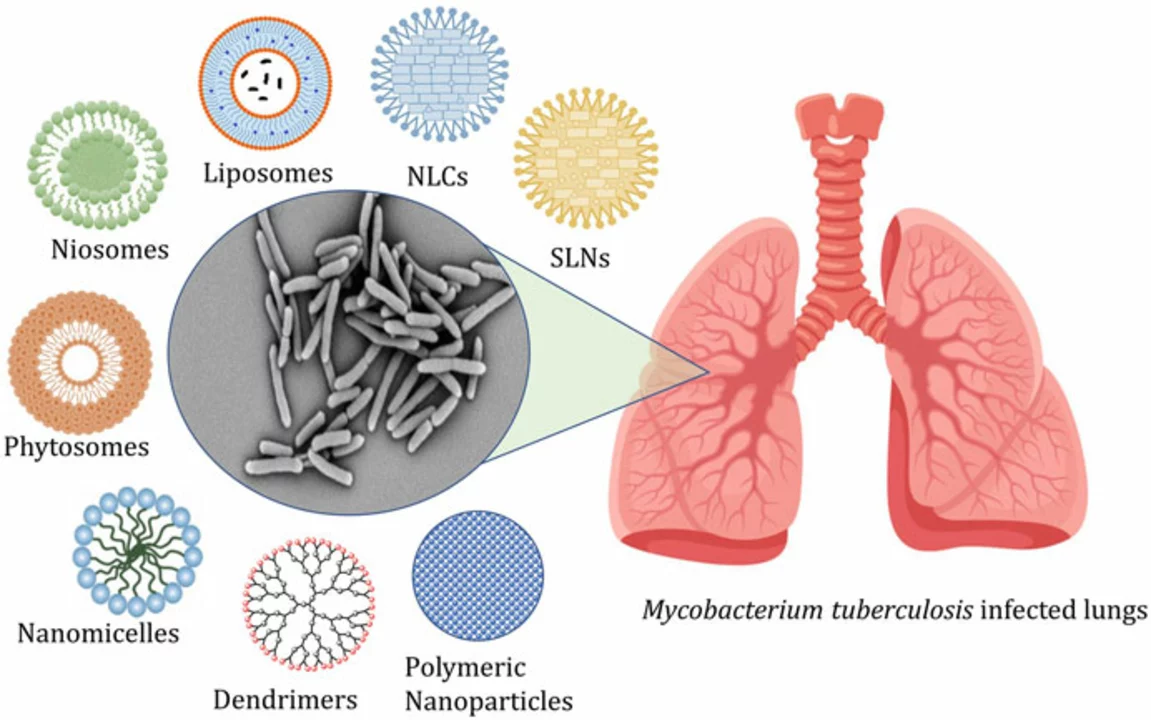Cycloserine is an antibiotic mainly used as a second-line treatment for tuberculosis that resists first-line drugs. Doctors turn to it when strains don’t respond to isoniazid or rifampin. It’s not a routine drug — it comes up when treatment options are limited and you need a backup plan.
Typical adult doses vary with the patient and the form of TB being treated. Many patients take 250–500 mg two times a day, with a total daily dose usually capped near 1 gram. Doctors adjust the dose by weight and kidney function. Never change doses on your own; dosing should follow close medical guidance and lab checks.
The most common worries are nervous system and mood problems. People can get headaches, irritability, trouble sleeping, memory issues, or depression. In some cases cycloserine causes severe anxiety, confusion, or even psychosis. Seizures are possible, especially in people with epilepsy or heavy alcohol use. If you or a family member notice sudden mood shifts, hallucinations, or thoughts of self-harm, call your prescriber right away.
Pyridoxine (vitamin B6) is often prescribed alongside cycloserine to lower the chance of nerve and mood side effects. Make sure your prescriber gives a clear plan for vitamin B6 — it can make a real difference. Also avoid alcohol and recreational drugs while taking cycloserine; they raise the risk of seizures and mental side effects.
Take cycloserine exactly as your health team tells you. If you miss a dose, take it as soon as you remember unless it’s almost time for the next dose — don’t double up. Keep follow-up visits and lab tests; your doctor may check kidney function and watch for signs of toxicity. Tell your provider about any mental health history, seizure disorders, or other medicines you use — some drugs can increase risk of side effects.
Kidney problems change how the body clears cycloserine, so dose adjustments are common for older patients or those with reduced renal function. Pregnant or breastfeeding people should discuss risks and alternatives; risks vary by situation and need careful weighing by a clinician.
There’s also a different use of D-cycloserine in psychiatry research: small doses can help some people respond better to exposure therapy for anxiety or PTSD. That use is experimental and handled by specialists — don’t try it on your own.
Keep a medication list with cycloserine and share it at every visit. Include supplements, over-the-counter drugs, and herbal products. Clear records help prevent dangerous interactions and ensure safer, faster care. Tell your pharmacist about allergies.
Bottom line: cycloserine can be a valuable option when TB is hard to treat, but it carries real risks to mood and the nervous system. Stay in close contact with your care team, use vitamin B6 if recommended, avoid alcohol, and report any worrying symptoms immediately. If you want help understanding a prescription or side effects, bring your questions to your clinician — they’re there to help.

In my latest blog post, I discussed the crucial role of cycloserine in managing multidrug-resistant tuberculosis (MDR-TB). Cycloserine, an antibiotic, has become increasingly important in the treatment of MDR-TB, especially when other first-line medications are ineffective. This is because it targets the bacteria causing TB in a different way, thus overcoming resistance. However, it's essential to use cycloserine in combination with other antibiotics to ensure maximum effectiveness and minimize the risk of further resistance. Overall, cycloserine plays a vital role in the fight against MDR-TB, and ongoing research is crucial to optimize its use and develop new treatments.
Learn how to safely manage diuretics in heart failure patients to prevent dangerous low potassium levels. Practical tips on monitoring, supplements, medications, and lifestyle changes to reduce arrhythmia risk.
I recently came across an incredible dietary supplement called Moringa, and I just had to share its amazing benefits with you all. This nutrient-packed plant is transforming lives and improving health in numerous ways. Rich in vitamins, minerals, and amino acids, Moringa has been known to boost energy, improve digestion, and even support a healthy immune system. It's no wonder that it's gaining popularity as a superfood! If you're looking for a natural way to enhance your overall well-being, you might want to consider giving Moringa a try.
As a copywriter, I've been researching Celecoxib and its connection to skin conditions, and I'd like to share some important information I've learned. Celecoxib is a nonsteroidal anti-inflammatory drug (NSAID) commonly used to treat pain and inflammation. However, it's crucial to know that some people may experience skin reactions while taking this medication. These reactions can range from mild rashes to serious conditions like Stevens-Johnson Syndrome. If you're considering Celecoxib for pain relief, it's essential to consult with your doctor about potential risks and monitor your skin closely while taking the medication.
Buying medicine online might seem convenient, but counterfeit drugs are a deadly threat. Fake pills often contain fentanyl, toxic chemicals, or no active ingredient at all. Learn how to spot real pharmacies and protect yourself.
Discover how magnesium, valerian root, and CBD may help relax muscles, relieve spasms, and support your back pain regimen alongside methocarbamol.